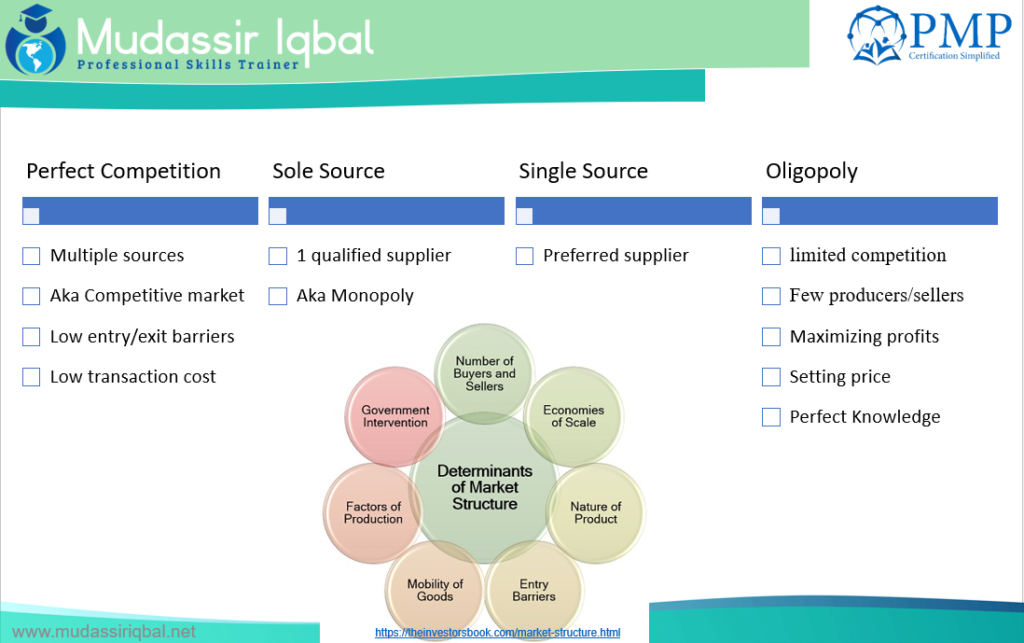Market structures vary based on the level of competition, ranging from the perfect competition where many buyers and sellers exist to the monopoly where one seller dominates the market.
What is Market Structure?
Market structure, in economics, refers to how different industries are classified and differentiated based on their degree and nature of competition for goods and services. It is based on the characteristics that influence the behavior and outcomes of companies working in a specific market.

- Perfect competition: This is a market structure where there are numerous buyers and sellers of a homogeneous product, and no single buyer or seller can influence the market price. Examples include agricultural markets. This market structure has a lack of innovation incentives and few barriers to entry.
- Monopoly/Single Source: A single seller dominates the market and controls the supply of a unique product or service. Examples include utility companies. In a monopoly, however, there’s only one seller in the market. The market could be a geographical area, such as a city or a regional area, and doesn’t necessarily have to be an entire country.
- Oligopoly: is where a few large firms dominate the market and compete with each other. They may use non-price competition, such as advertising, to differentiate their products. Examples include the automobile and airline industries.
- Soule Source: Here a single buyer dominates the market and controls the demand for a product or service. Examples include a company that is the sole buyer of raw materials from farmers.
Market structure is a crucial aspect of economics that helps us understand how markets function and how firms interact with each other and with consumers. Each market structure has its own unique features, benefits, and drawbacks, and understanding them is essential for making informed decisions in business and public policy. By analyzing market structures and their implications, we can gain valuable insights into the behavior of firms and the efficiency of markets, and use this knowledge to promote competition, innovation, and consumer welfare.
Further Reading
Market Structure – Overview, Distinct Features, Types (corporatefinanceinstitute.com)
1.5 Monopolistic Competition, Oligopoly, and Monopoly – Exploring Business (umn.edu)
Procurement, Purchasing, Contract, Agreement, Contract Types and Risks Associate

